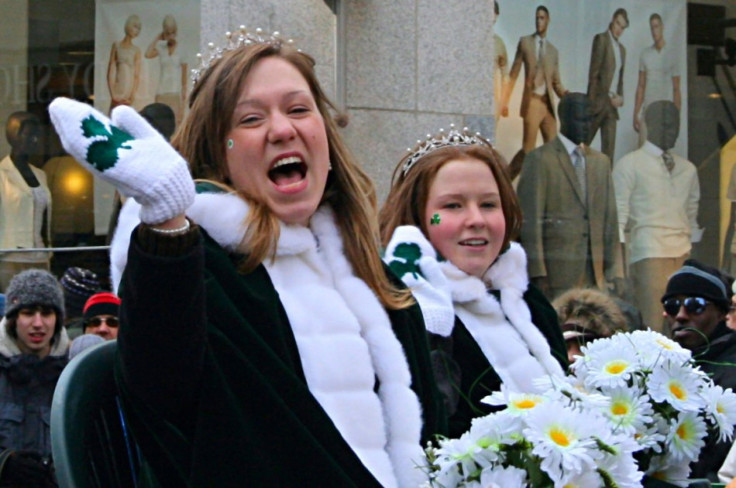St. Patrick's Day 2012: The Dilution of Irish Culture
OPINION

St. Patrick's Day in New York celebrates the long presence of the Irish in the city they once dominated. This Saturday, tens of thousands of people will line up along Fifth Avenue to watch a colorful parade, featuring bagpipe bands, pretty red-haired girls, and police and fire regiments. Of course, the celebration will be accompanied by the quaffing of untold gallons of beer.
But the parade (and all other related celebrations) will likely have very little to do with St. Patrick himself, the Christian missionary who journeyed to Ireland more than 1600 years ago and became the patron saint of the Emerald Isle.
Indeed, St. Patrick's Day (like many other American holidays) has degraded into a vulgar, commercial enterprise that has completely undermined its original purpose.
In New York City, this demonstration of “Irish pride” annually features excessive drinking, fights, public urination and many arrests for public intoxication and criminal assaults.
Moreover, St. Patrick's Day is gradually becoming anachronistic, given New York City's rapidly changing demographics. In fact, the annual West Indian Day parade in Brooklyn -- which celebrates Afro-Caribbean culture -- actually attracts bigger crowds now than does old Saint Paddy.
Virtually every major ethnic group and nationality in New York City – Italians, Puerto Ricans, Greeks, Germans, Indians, Jews-Israelis, Dominicans, etc. – have their day in the sun in Gotham. But nothing seems to compare with the Irish St. Patrick's Day in terms of public appeal and media coverage.
But it all seems rather cheap, tawdry, superficial and vulgar.
Irish-Americans I have known are either apathetic about St. Patrick's Day or they enjoy it on a kitschy level.
Irish-Americans dominated New York City life roughly from the mid-19th century (when the famine in Ireland prompted a huge wave of emigration) roughly until the 1970s. During that glorious period, the Irish largely controlled New York City's police force, firefighters, unions, politics, courts and the docks.
Of course, Hibernians still have a large presence in some of these institutions, but many of these Irish now live in the suburbs. As such, a great many of the people who watch the parade (or actually even participate in it) are decidedly non-Irish.
The sad thing is that most Irish-Americans know or care little about the real Ireland – a fantastically beautiful country with a rich, deep and tragic history and culture most of them have never visited and likely have no interest in.
St. Patrick's Day in New york City reduces that complex history into a day of inebriation, mindless sloganeering, plastic shamrocks and green beer.
Some 40-million Americans can trace their ancestry to Ireland, making the Irish one of the largest ethnic groups in the country. As such, they are totally assimilated into “mainstream” U.S. – I am sure you have heard of the Kennedy family?
I suspect that their huge numbers and “submerged” profile has completely diluted and undermined traditional Irish culture in this country.
Being “Irish” has become utterly meaningless – a wonderful, fascinating culture has been reduced to cheap, shallow stereotypes and jokes about drunkenness.
There are no “Irish neighborhoods” anymore, and, by extension, “Irish identity” has been co-opted and subsumed.
Indeed, how many Irish-Americans know or care about Eamon de Valera, James Joyce, Daniel O'Connell or Wolfe Tone?
There is something else quite interesting about the evolution of the Irish in America. In contemporary U.S. media, “Irish” has become virtually synonymous with “white Christian American.” The Irish are “ethnic,” but not “too ethnic.” How many TV shows and movies have leads with Irish surnames? Almost all of them.
In exchange for complete acceptance and assimilation, the Irish in the U.S. have obliterated their culture and identity
(just like the Germans have).
After all, when was the last time you heard the term “British-American?”
Erin go bragh!
© Copyright IBTimes 2024. All rights reserved.





















